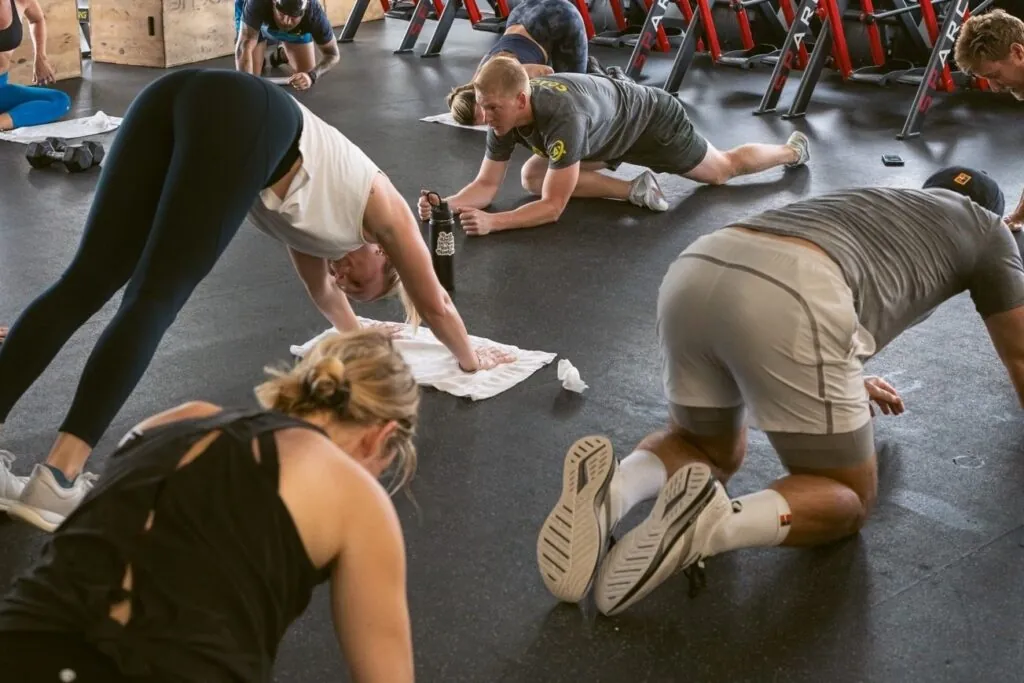Do you wake up feeling stiff every morning, as if your body has become stiff overnight? For many, this isn’t just an annoying discomfort; it’s a barrier that affects daily activities and diminishes quality of life. Chronic stiffness and reduced flexibility can turn simple tasks into daunting chores. What if the key to unlocking your body’s potential lies not in occasional stretches, but in making flexibility exercises a daily habit? Let’s see how integrating regular flexibility training into your routine could transform your day-to-day experiences, reducing pain and increasing mobility.
The science behind flexibility
At its core, flexibility is the range of motion around a joint. It’s that sweet spot that allows you to bend, twist, and reach without hearing a symphony of snaps, crackles, and pops.
The human body is a masterpiece of interconnected systems. When you stretch, you’re not just pulling on a random piece of string. You’re communicating with your nervous system, telling it that it’s safe to extend your muscles a little further.
When you stretch regularly, your body gets the memo and starts to increase the length of your muscles and tendons. This is known as ‘muscular plasticity.’ It’s like your body’s secret superpower to adapt and change. And guess what? It doesn’t stop there. Regular flexibility exercises can even alter your pain receptors, making you less sensitive to discomfort during stretching.
So naturally, when you’re more flexible, your body works more efficiently. Your muscles are less prone to injury, your posture improves, and even mundane tasks like reaching for that top-shelf tanning lotion become a breeze.
Benefits of flexibility for all ages
Regardless of your age or occupation, daily flexibility exercises can serve as a game-changer for your overall health and well-being. From teenagers to seniors, office workers to athletes, everyone can benefit from a bit of daily stretching. Here’s why:
- Improved mobility: As we age, our joints can become stiff and our range of motion can decrease. Regular flexibility exercises can help to alleviate these issues, keeping your body supple and mobile, whether you’re 16 or 60!
- Reduced risk of injury: When your body is flexible, it can handle more physical stress. This means fewer injuries, especially for those involved in physical activities like sports or even just daily chores. So if you’re an office worker constantly battling with back pain or a teen athlete, daily stretching is your armor against injuries.
- Better posture: Our modern lifestyle, filled with desk jobs and constant screen time, isn’t doing our posture any favors. Flexibility exercises can help correct postural problems, reducing the risk of related pains and aches.
- Stress relief: From exam stress for teens to work-related woes for adults, we all have our share of daily stress. The good news is, flexibility exercises can help in stress management. As you stretch, you not only work your muscles but also release pent-up mental tension.
- Enhanced physical performance: For the athletes out there, flexibility exercises can improve your performance by increasing your range of motion. This means you can run faster, jump higher, and perform better, no matter the sport.
- Improved balance and stability: Particularly for seniors, maintaining balance and stability is crucial to prevent falls. Regular flexibility exercises can enhance your balance and stability, making daily activities safer and more comfortable.
- Promotes a healthy lifestyle: Finally, incorporating flexibility exercises into your daily routine promotes a proactive approach to health. It’s a gentle reminder that every bit of movement counts and contributes to your overall well-being.
Types of flexibility exercises
Let’s look into three of the most common types: Dynamic stretches, Static stretches, and Proprioceptive Neuromuscular Facilitation (PNF).
- Dynamic stretches: These types of stretches involve active, controlled movements that gently push your muscles and joints through their full range of motion. The benefits of dynamic stretches include warming up your muscles, improving athletic performance, and enhancing motor coordination.
- Static stretches: Unlike dynamic stretches, static stretches involve holding a stretch for a certain amount of time, usually between 15 to 60 seconds. These stretches are excellent for increasing overall flexibility and cool down after a workout.
- Proprioceptive Neuromuscular Facilitation (PNF): PNF is a more advanced form of flexibility training that involves both the stretching and contracting of the muscle group being targeted. PNF not only improves flexibility but also enhances muscular strength. This technique can be as simple as holding a stretch (like a hamstring stretch), contracting the muscle for a few seconds, relaxing it, and then stretching it again to increase the range of motion. But remember, PNF stretching should be done under proper guidance to avoid any potential injuries.
Which one should you do?
If your aim is to warm up your body and prepare it for a workout, dynamic stretches are your best bet. However, if you want to cool down post-workout and improve overall flexibility, static stretches will do the trick.
PNF, on the other hand, is excellent for those looking to enhance both flexibility and muscle strength. However, due to its intensity, it’s often recommended for more advanced exercisers or performed under the guidance of a fitness professional.
Example of flexibility routine
This routine is perfect for beginners and can be done daily to enhance your flexibility.
- Leg swings (Dynamic): Stand next to a wall for support. Swing one leg forward and backward in a controlled manner. Do this for about 30 seconds, then switch to the other leg.
- Arm circles (Dynamic): Stand with your feet shoulder-width apart. Extend your arms out to the sides and make small circles with them for about 30 seconds. Switch directions and repeat.
- Walking lunges (Dynamic): Step forward with your right foot and lower your body until your right knee is at a 90-degree angle. Push through your right foot to stand back up and step forward with your left foot. Repeat for about a minute.
- Hamstring stretch (Static): Sit on the floor with one leg extended out and the other bent inward. Lean forward from your hips (not your back) and reach for your toes. Hold this stretch for about 30 seconds, then switch to the other leg.
- Butterfly stretch (Static): Sit on the floor with the soles of your feet pressed together. Hold your feet or ankles and gently push your knees down with your elbows. Hold this stretch for about 30 seconds.
- Triceps stretch (Static): Stand or sit up straight. Reach your right arm up, bend it at the elbow, and touch the top of your back. With your left hand, gently pull your right elbow. Hold this stretch for about 30 seconds, then switch to the other arm.
When should you skip the flexibility routine?
Flexibility exercises can be done every day. However, if your muscles are sore and you’re feeling pain, take a rest day.
When should you do flexibility exercises?
Flexibility exercises can be done at various times throughout the day since they don’t take a lot of time.
You can Kick-start your day with some dynamic stretches. This can help to wake up your muscles, increase blood circulation, and set a positive tone for the day.
Or if you are an active person, you can do dynamic stretches before you dive into your main workout. When you are done with the workout, you can spare a few minutes on static stretches.
Alternatively, if you don’t exercise that often, you can try a few stretches if you’re feeling a bit sluggish in the afternoon. It can help to re-energize your body and clear your mind. In the end, there is nothing wrong with doing flexibility exercises in the evening since it could help to relax your body and mind, preparing you for a good night’s sleep.
So it comes down to when it works for you. Just make sure you stay consistent and you will see benefits really soon.
Final thoughts
Incorporating flexibility exercises into your daily routine is a great way to improve your overall health and wellness, regardless of your age or fitness level. From dynamic to static stretches, or the more advanced PNF techniques, there’s something for everyone.
Remember, flexibility is not about being able to do the splits or touch your toes; it’s about maintaining a range of motion that allows you to lead an active and healthy life. Whether you’re warming up for a workout, cooling down afterward, or simply looking for a way to break up your desk-bound day, these exercises can make a world of difference.





